Mythical Deities in Chinese Mythology, Folklore, and Legends
Beyond the Gods and Goddesses who shape the very fabric of creation and the enchanting Mythical Creatures dwelling in Wondrous Realms, ancient Chinese Mythology unveils another layer of the divine tapestry — the mythical deities.
These ethereal beings are entrusted with the sacred duty of guarding specific places, holding unique roles, and weaving their enchantment through the annals of Chinese folklore and legends.
With each deity, a story unfolds, revealing the profound depths of reverence and mystery that thread through the cultural heritage of China.

Penglai Island Painted by Artist Qiu Ying (about 1497 — 1552) — Poly Art Museum
Gou Mang — God of Wood, Spring, and the East
Gou Mang (句芒) possesses a bird's body and a human head. Typically, Gou Mang is depicted riding two dragons, soaring through the sky.
This deity is entrusted with the responsibility of nurturing the sprouting and growth of trees and overseeing the domain where the sun rises.

Deity Gou Mang, Painted by Artist Shan Ze.
Ru Shou — God of Metal, Autumn, and West
Ru Shou (蓐收) possesses a human-like figure with white hair, tiger's claws, and a snake on his left ear.
He is often depicted wielding a giant axe and riding atop two dragons.
In addition to overseeing the autumn and harvest, Ru Shou is also responsible for upholding justice, using his giant axe to punish wrongdoers.
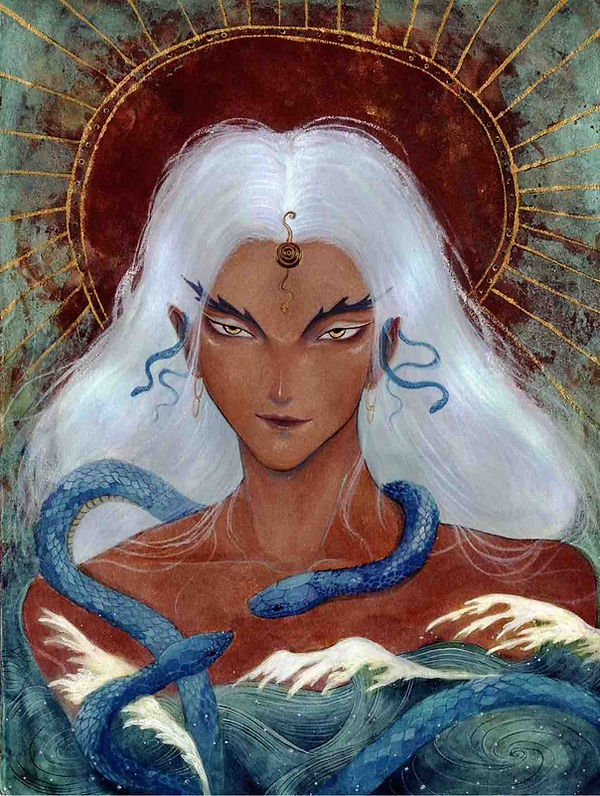
Deity Ru Shou, Painted by Artist Lu Ming Shan.
Zhu Rong — God of Fire, Summer, and South
Zhu Rong (祝融) possesses a beast's body and a human head, often depicted riding two dragons across the sky.
He is revered for teaching humanity the use of fire, bringing prosperity and well-being to their lives.
Additionally, Zhu Rong is esteemed as the Deity of Nanyue the Great, symbolizing the south and longevity, and serving as the guardian of Mount Heng in Hunan Province.
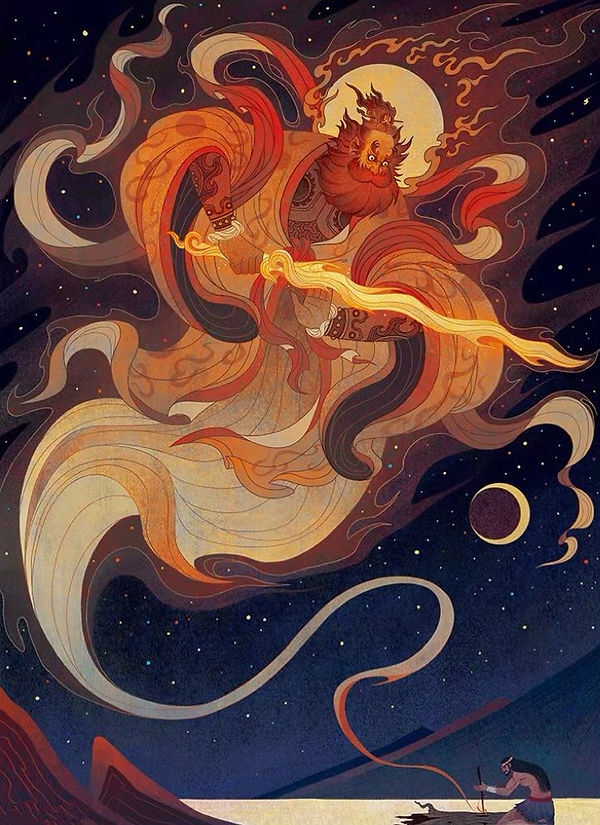
Deity Zhu Rong, Painted by Artist Snow Fish.
Yu Qiang — God of Water, Winter, and North
Yu Qiang (禺强) is depicted with a human's head and a bird's body, often adorned with two cyan snakes and riding on two snakes.
In some other myths and folklores, Yu Qiang is described as having a human's head, hands, and feet on a fish's body, and riding two dragons.

Deity Yu Qiang, Painted by Artist Lu Ming Shan.
Hou Tu — God of Earth, Land, and Central
Hou Tu (后土) is the great deity responsible for overseeing everything on the land. This includes mountains, rivers, crops, plants, reproduction, and related deities.
With benevolent grace, she watches over the fertile fields and ensures the harmonious cycle of life, from the birth of new plants to the reproduction of all living creatures.
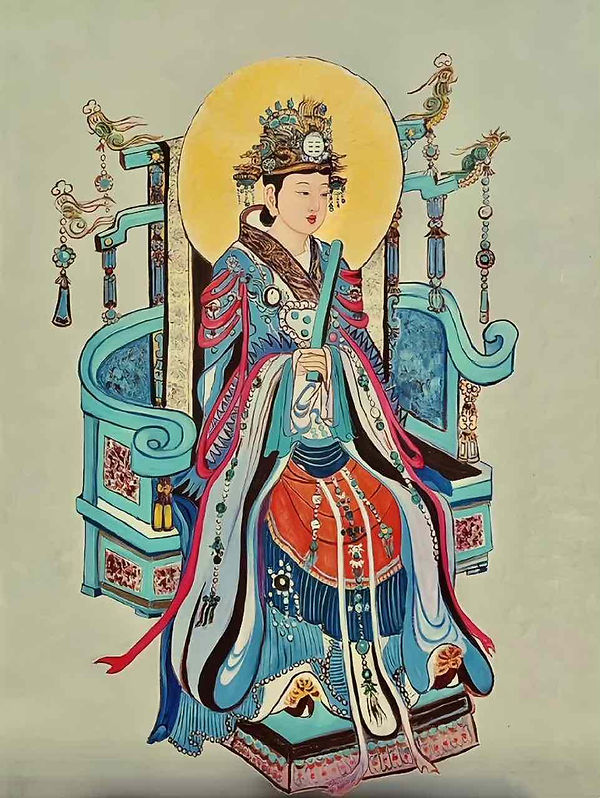
Deity Hou Tu, Painted by Artist Huan Xiang.
Xi He — Goddess of the Sun
Xi He (羲和), the goddess of the sun, played a prominent role in various Chinese myths.
In some versions, she was depicted as the mother of ten suns, while in others, she was revered as the deity responsible for observing the sun's movements.
Additionally, Xi He held the significant responsibility of observing and recording astronomical phenomena, as well as regulating time and calendars.
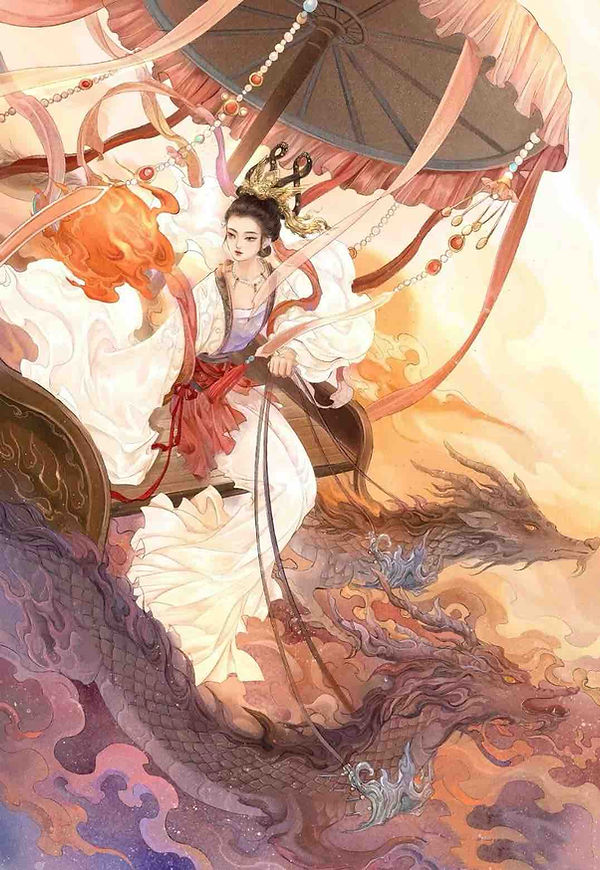
Deity Xi He, Painted by Artist Hua Hua.
Chang Xi or Wang Shu — Goddess of the Moon
Chang Xi and Wang Shu, both revered as Goddesses of the Moon, play significant roles in ancient Chinese mythology.
Chang Xi (常羲), in particular, is associated with giving birth to 12 moons, symbolizing the 12 months of the year.
In some versions, Chang Xi is regarded as the same deity as Xi He, the Goddess of the Sun, responsible for setting time and calendars and orchestrating the movements of the sun and moon.
Wang Shu (望舒), on the other hand, is believed to be the deity that drives the moon's cart, overseeing the movement of the moon.
In different myths, legends, and folklores, Chang Xi, Wang Shu, and the deity Chang E collectively represent the Goddess of the Moon.
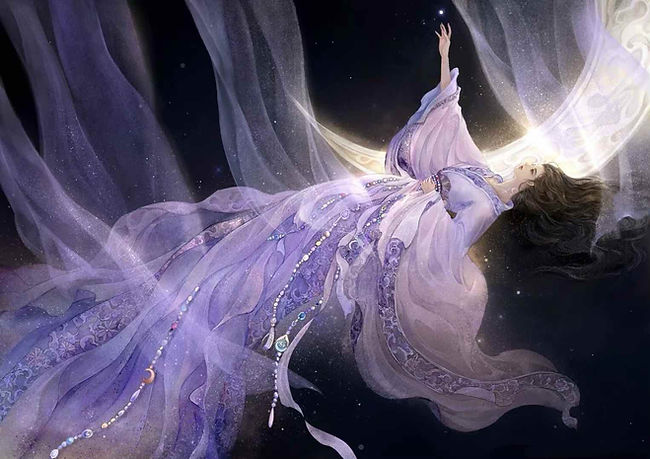
Deity Wang Shu, Painted by Artist Hua Hua.
Feng Bo — God of Wind
Feng Bo (风伯), also named Fei Lian (飞廉), is the God of Wind in Chinese mythology.
He is depicted with a deer's body, a snake's tail, leopard's patterns, and a peacock's head adorned with two horns.
In history, Feng Bo was associated with the Winnowing-basket Constellation in Chinese Astrology.
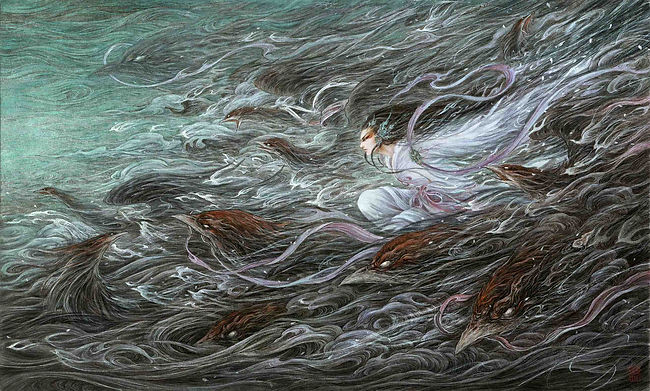
Deity Feng Bo, Painted by Artist Shan Ze.
Yu Shi — God of Rain
Yu Shi (雨师) was initially associated with the Net Constellation in ancient Chinese Astrology and later evolved into a human figure deity who commands a dragon to bring forth rain.
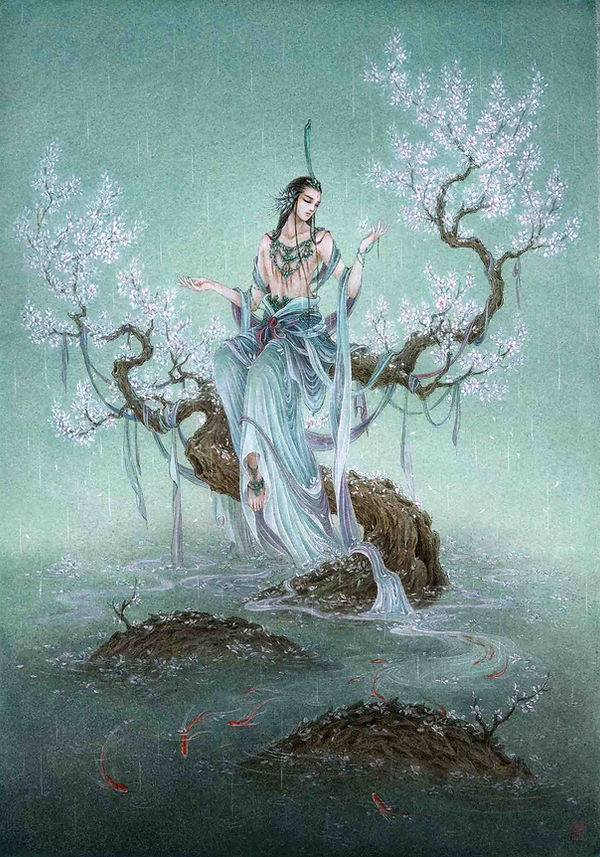
Deity Yu Shi, Painted by Artist Shan Ze.
Shen Shu and Yu Lv — Door Gods or Menshen
Shen Shu (神荼) and Yu Lv (郁垒) are two deities who guard the gates of the ghosts' realm.
They hold dominion over all the spirits and actively pursue and eliminate those that harm other living beings.
As a result of their important role, their images have become popular Door Gods, or Menshen, in Chinese culture.
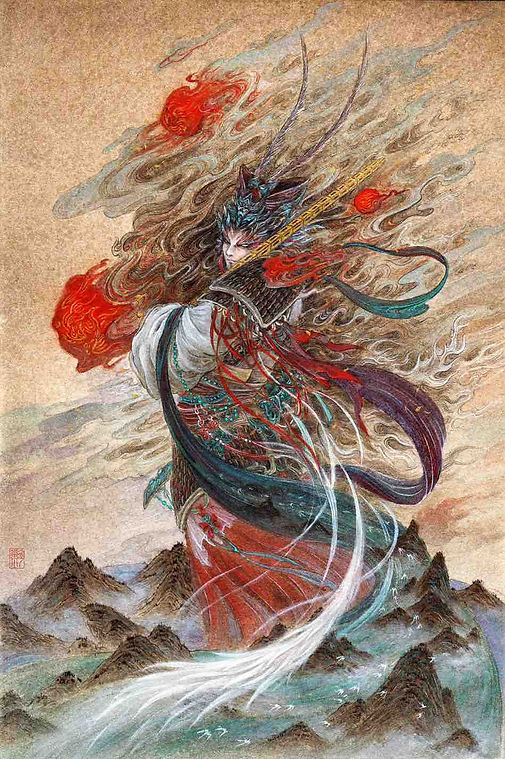
Deity Shen Shu, Painted by Artist Shan Ze.
Typically, Shen Shu is positioned on the left side, while Yu Lv is on the right.
People believe that these deities can expel evil spirits and ward off bad luck, safeguarding their families who reside behind the door protected by these two guardian spirits.
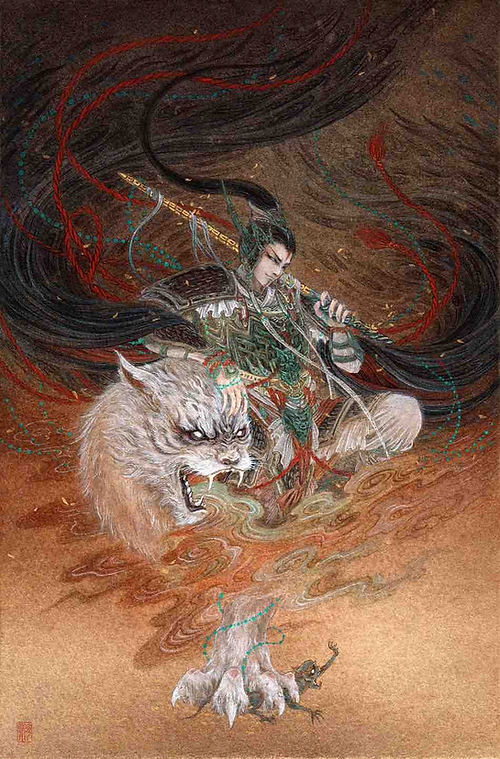
Deity Yu Lv, Painted by Artist Shan Ze.
Tai Feng — Deity of Auspiciousness
Tai Feng (泰逢) is an auspicious deity with a human figure, a tiger's tail, and mysterious power.
Bright glow follows wherever he goes, the strength of the heaven and earth are at his service.
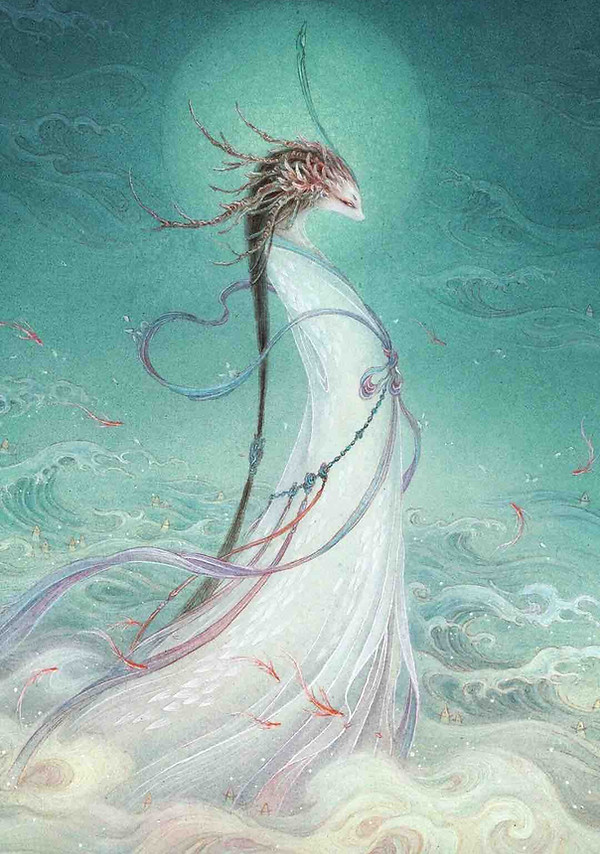
Deity Tai Feng, Painted by Artist Shan Ze.
Lu Wu — Deity of Kunlun Mountains
Lu Wu (陆吾), also named Kaiming Shou, is a deity as large as 99 tigers, possessing a human head and a tiger's body with nine tails.
He serves as the guardian and open-minded administrator of the Kunlun Mountains, a sacred realm in ancient Chinese mythology, overseeing the plants, animals, and climates within.
Lu Wu played a crucial role in history by assisting Yu the Great, the founder of the Xia Dynasty (about 2070 BC — 1600 BC), in defeating monsters and combating a vast flood.
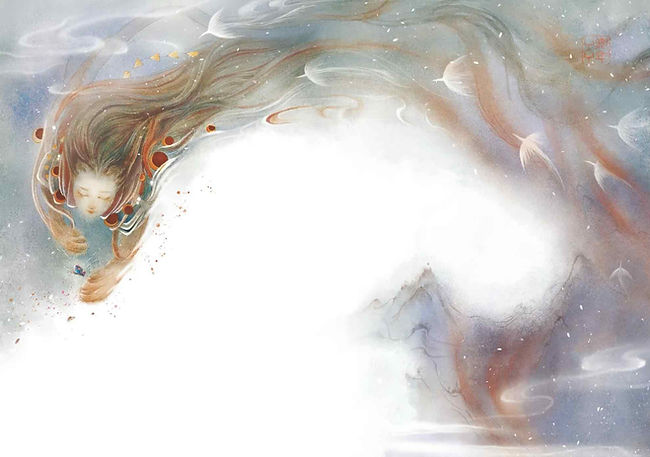
Deity Lu Wu, Painted by Artist Annian Yaya.
Zhu Yin — Deity of Zhong Mountains
Zhu Yin (烛阴) is a deity with a dragon's head and snake-shaped red body that stretches over 500 kilometers in length, inhabiting in the mystical Zhong Mountains.
He possesses a human head and is responsible for controlling time and weather.
Notably, Zhu Yin never eats or sleeps.
He has a unique role in the celestial order. When Zhu Yin opens his eyes, he brings daytime to the world, and when he closes them, darkness falls upon the earth.
His exhalation heralds the arrival of winter, while inhalation ushers in summer.
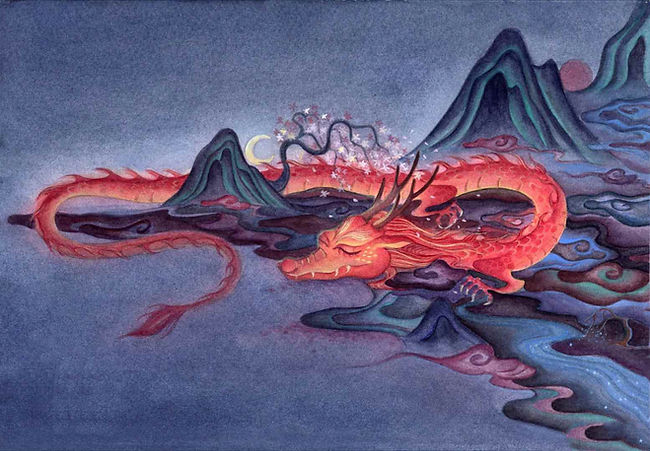
Deity Zhu Yin, Painted by Artist Fish Juanjuan.
Ying Zhao — Deity of Heavenly Garden
Ying Zhao (英招) serves as the guardian of a mystical and magnificent garden in heaven.
This deity is depicted with a horse's body and a human's upper torso, adorned with bird's wings and tiger's patterns.
Ying Zhao has a penchant for soaring across the sky and embarking on travels across the world.
Throughout history, this mythical being has actively participated in numerous wars, bravely fighting against evil forces.
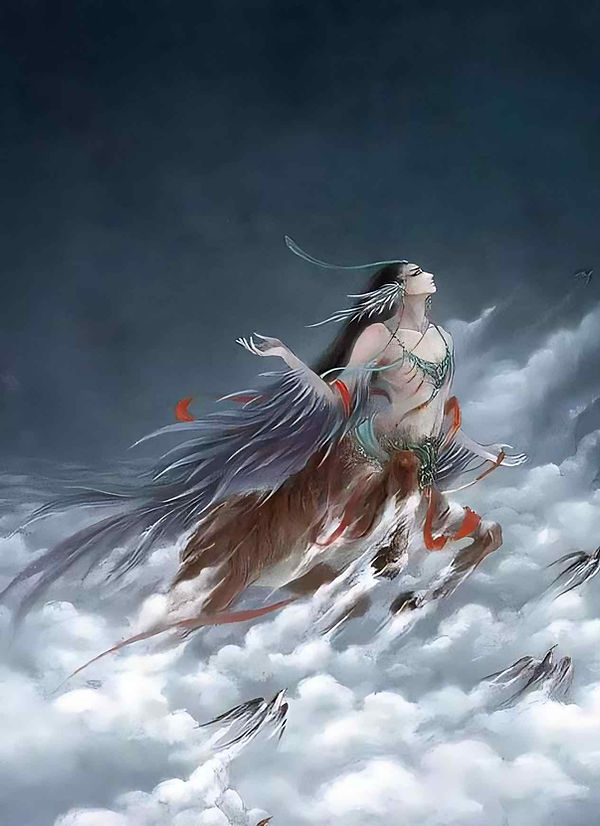
Deity Ying Zhao, Painted by Artist Shan Ze.
You Might Also Like:
Mythical Beings: Soul, Spirit, Demon, Monster, Ghost, Devil, Deity, and God
Mythical Creatures and Animals in Chinese Mythology, Folklore, and Legends
Mythical Places in Chinese Mythology, Folklore, and Legends
Ancient Creation Myth and Chinese Gods
Chinese Goddesses in Creation Myths and Legends, Religions, and Folklore
Chinese Mythology — Origins, Characteristics, Folklore, Legends, and Elements
Chinese Dragon or Loong — History, Power, Utilization, and Culture
The Nine Sons of the Dragon — An Ultimate Guide
Chinese Phoenix Fenghuang — Legend, History, Utilization, and Culture
The Five Types of the Fenghuang — Legends, Symbolism, and Influence
The Nine Sons of the Chinese Phoenix Fenghuang — An Ultimate Guide
Qilin — Mythical Creature of Benevolence, Strength, and Auspiciousness
Nine-Tailed Fox, Huli Jing, and Fox Spirit in Chinese Culture
Prehistoric Heroes and Apotheosized Kings
Yin Yang and Taiji — Origin, Meaning, Symbol, and Utilization
Chinese Zodiac Signs — A Comprehensive Introduction
Chinese Astrology — Three Enclosures, Four Symbols, Twenty-eight Lunar Mansions
